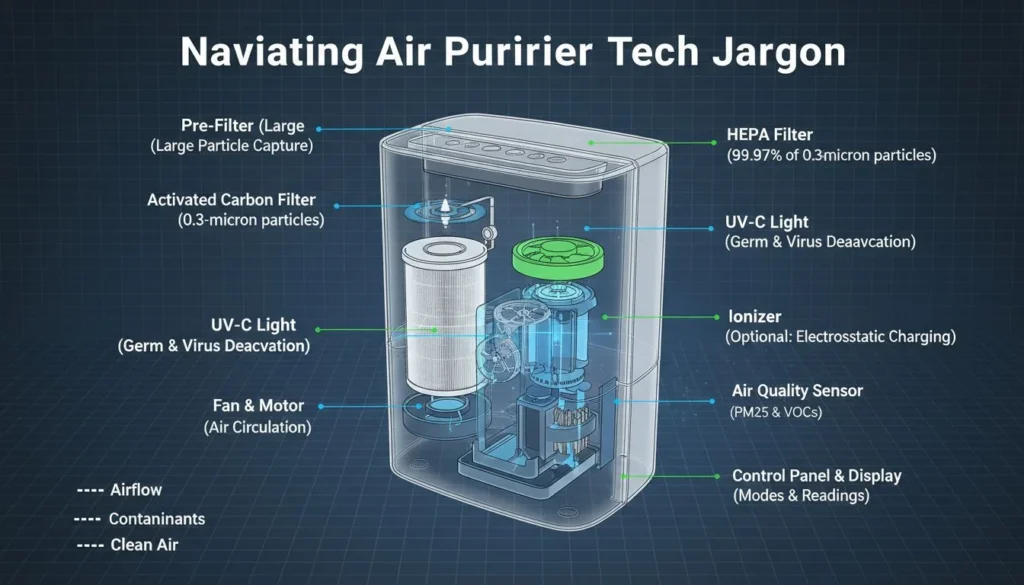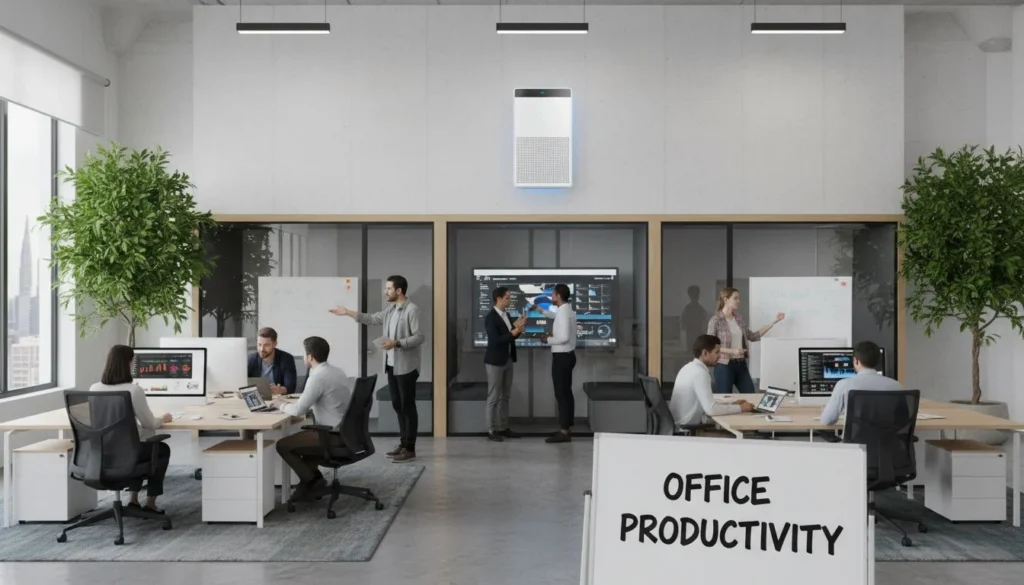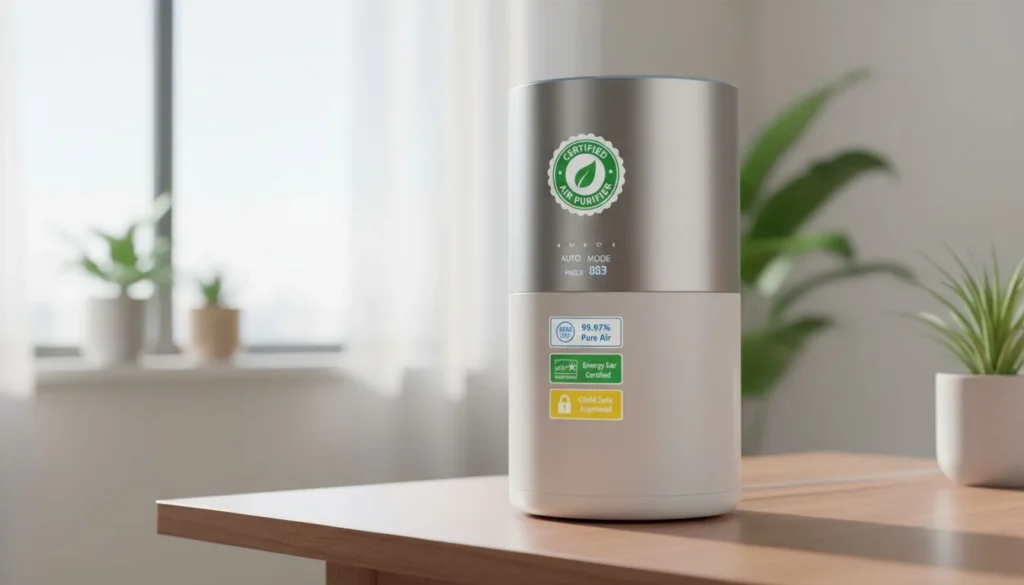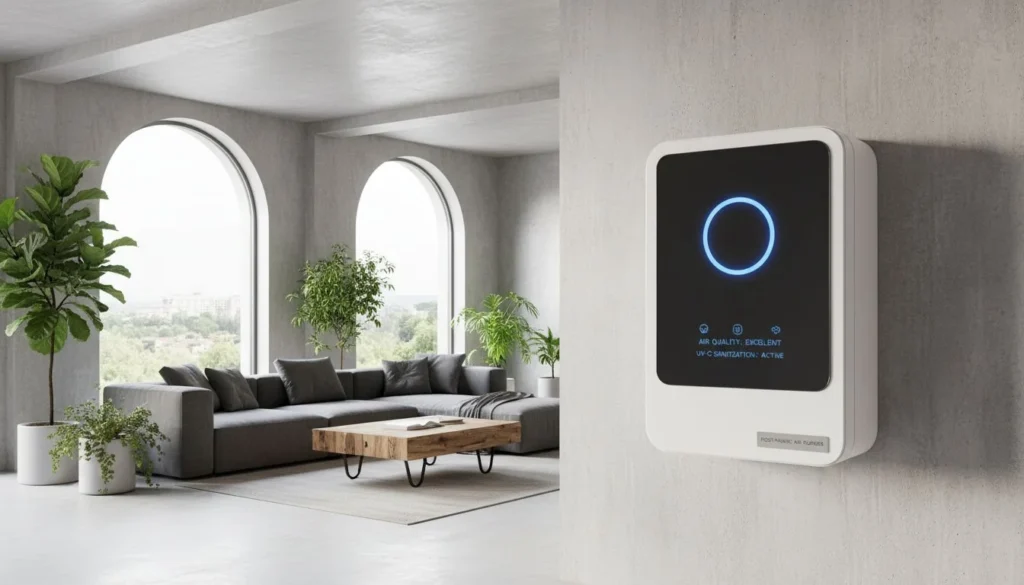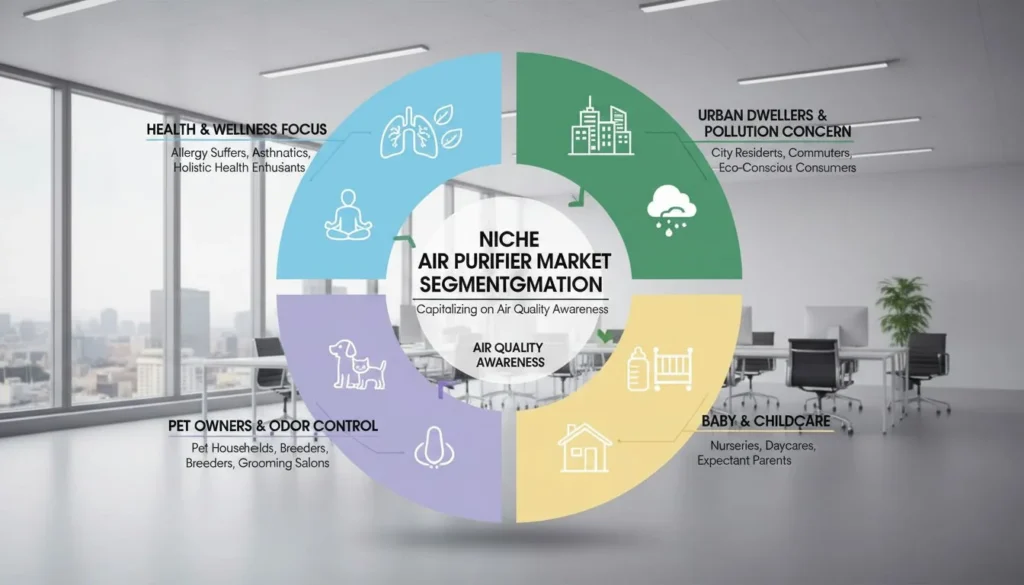Have you ever wondered how the latest humidifier technologies could transform your commercial spaces and product offerings? As indoor air quality becomes increasingly important for businesses and consumers alike, understanding the evolution of humidifier technology is crucial for B2B buyers looking to stay ahead of market trends.
The global humidifier market is projected to grow from $3.8 billion in 2025 to over $7 billion by 2035, driven by increasing health awareness, technological innovations, and the growing demand for integrated indoor air quality solutions. This remarkable growth presents significant opportunities for businesses that understand the technological shifts and consumer preferences shaping the industry.
As a leading manufacturer and IAQ solution provider with factories across China, Vietnam, and Thailand, HisoAir has been at the forefront of humidifier innovation for over two decades. Our insights into the market reveal several key trends that B2B buyers should consider when making purchasing decisions or developing product strategies.
How Are Evaporative and Ultrasonic Humidifiers Different in Commercial Applications?
When selecting humidifier technology for commercial spaces or product development, understanding the fundamental differences between evaporative and ultrasonic humidifiers is essential. These technologies operate on entirely different principles, resulting in significant variations in performance, health impacts, and maintenance requirements.
Ultrasonic humidifiers, while popular due to their affordability and quiet operation, create moisture by using high-frequency vibrations to break water into tiny droplets. This process, however, can disperse minerals and impurities present in tap water into the air. In commercial environments where air quality is paramount, this presents a significant challenge. Many B2B buyers have reported that ultrasonic humidifiers1 can trigger air purifier sensors, creating conflicting readings between devices and potentially compromising overall air quality management systems.
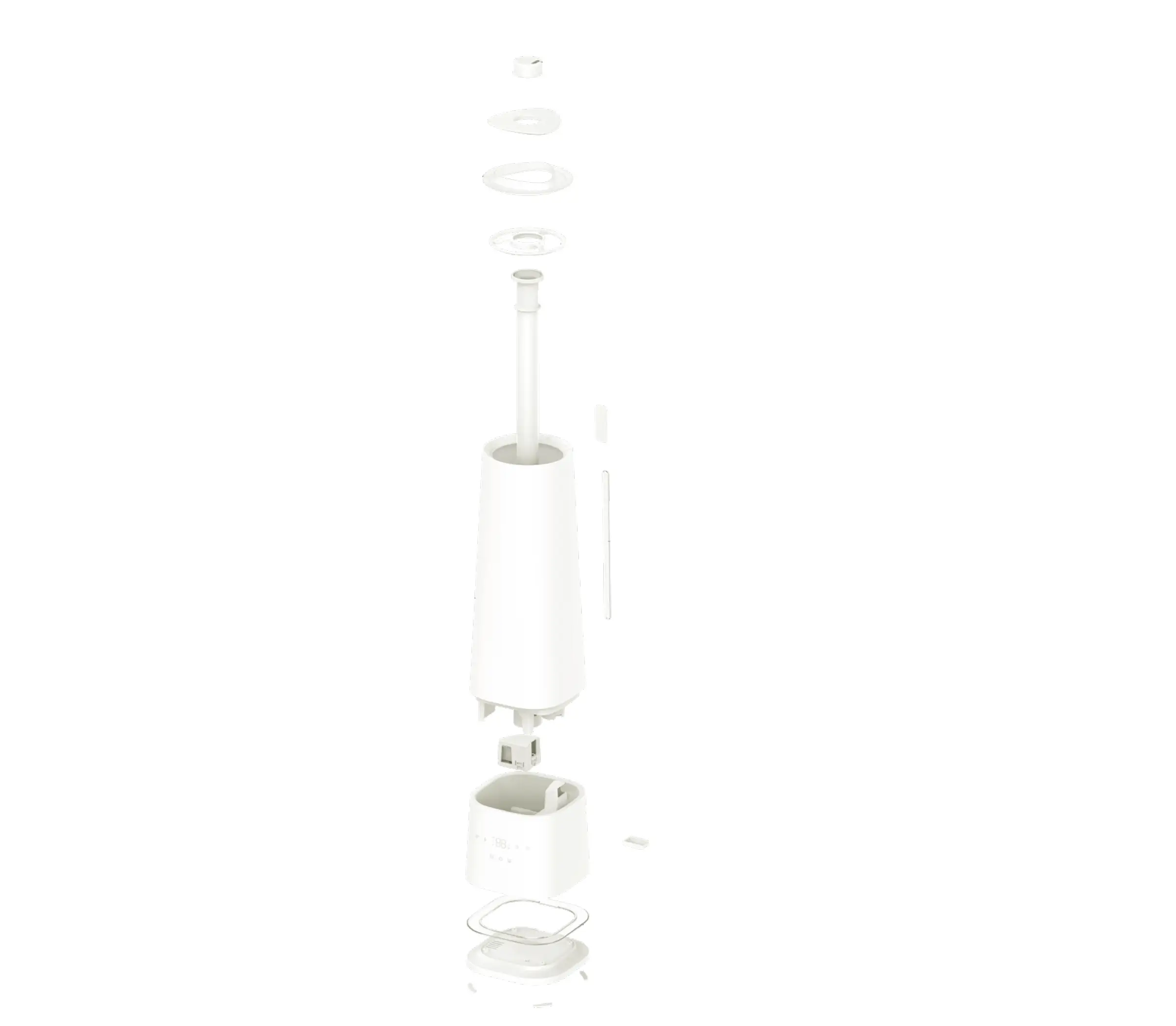
Evaporative humidifiers2, on the other hand, work by passing air through a moistened filter or wick, allowing natural evaporation to add humidity to the environment. This process acts as a natural filtration system, leaving minerals and impurities behind in the water tank rather than dispersing them into the air. For businesses concerned with maintaining optimal indoor air quality, evaporative technology offers a clear advantage by eliminating the risk of white dust and airborne impurities that can affect sensitive equipment and occupant health.
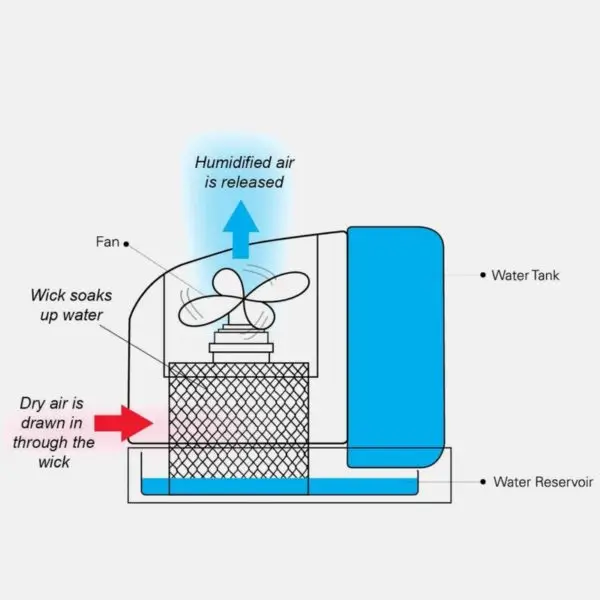
Research from leading health institutions indicates that evaporative humidifiers may provide superior benefits for respiratory health3 in commercial settings. By naturally filtering the water before it enters the air, these systems reduce the risk of breathing in mineral particles and potential contaminants. This natural filtration process makes evaporative humidifiers particularly valuable in healthcare facilities, offices, and educational institutions where air quality directly impacts occupant wellbeing and productivity.
The choice between these technologies ultimately depends on specific commercial needs, but the trend is clearly moving toward evaporative systems as awareness of air quality impacts grows. By understanding these fundamental differences, B2B buyers can make more informed decisions that align with both current needs and future industry directions.
Why Are Material Innovations Transforming Humidifier Performance and Hygiene?
The materials used in humidifier construction play a crucial role in determining product longevity, maintenance requirements, and overall hygiene. Recent innovations in materials science are revolutionizing humidifier design, with stainless steel water tanks4 emerging as a game-changing advancement for commercial applications.
Traditional plastic water tanks, while cost-effective, present several challenges in commercial environments. These tanks can become breeding grounds for bacteria and mold, particularly in settings where maintenance might be less frequent or thorough. Over time, plastic tanks may also develop micro-cracks and scratches that harbor biofilm, making thorough cleaning increasingly difficult. For B2B buyers supplying to healthcare facilities, hospitality businesses, or office environments, these hygiene concerns can significantly impact product reputation and customer satisfaction.
Stainless steel water tanks represent a significant leap forward in addressing these challenges. The non-porous nature of stainless steel prevents bacteria from embedding in the material, making it inherently more hygienic than plastic alternatives. In commercial settings where humidifiers may operate continuously for extended periods, this resistance to bacterial growth translates to cleaner operation and reduced maintenance requirements. Additionally, stainless steel's durability means these tanks maintain their integrity over time, without developing the micro-scratches that can harbor contaminants in plastic tanks.
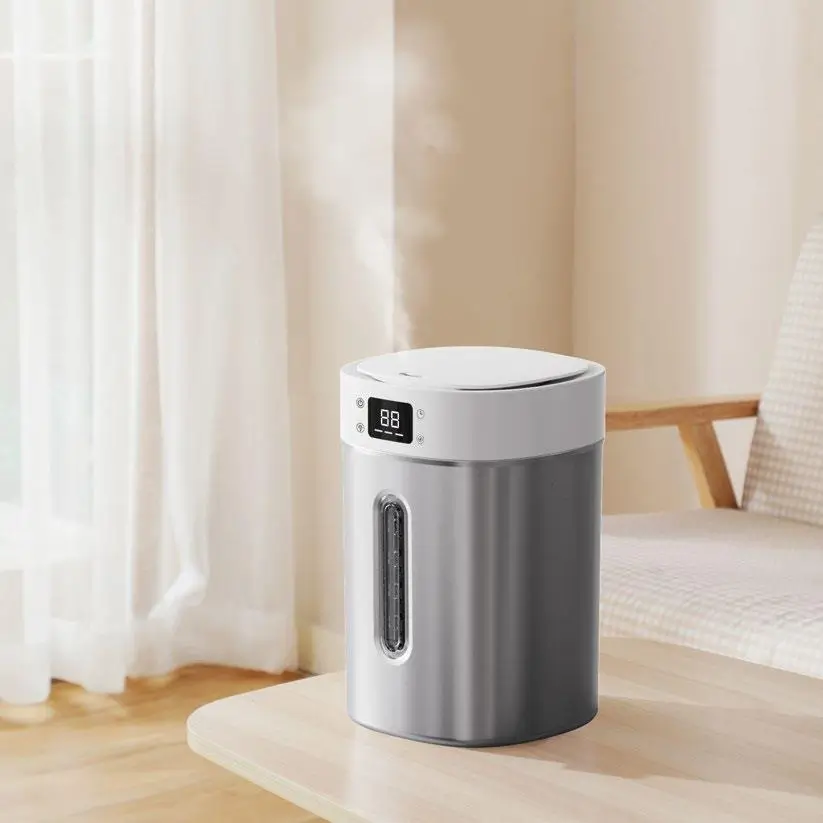
Case studies from commercial implementations demonstrate the practical benefits of this material innovation. A major hotel chain that switched to humidifiers with stainless steel tanks reported a 40% reduction in maintenance time and significantly improved air quality readings. Similarly, healthcare facilities have noted extended equipment lifespan and reduced contamination risks after upgrading to stainless steel tank humidifiers.
For B2B buyers, the initial higher cost of stainless steel tank humidifiers must be weighed against the long-term benefits: extended product lifespan, reduced maintenance costs, improved hygiene, and enhanced customer satisfaction. As health awareness continues to drive consumer preferences, this premium feature is increasingly becoming a standard expectation rather than a luxury option.
The trend toward superior materials extends beyond water tanks to include antimicrobial components, corrosion-resistant elements, and environmentally sustainable materials. Forward-thinking B2B buyers should consider these material innovations as key differentiators when selecting products that will meet both current demands and future expectations in the evolving humidifier market.
How Are IoT and AI Reshaping the Humidifier Industry?
The integration of Internet of Things (IoT) and Artificial Intelligence (AI) technologies is fundamentally transforming the humidifier industry, creating unprecedented opportunities for smart, connected indoor air quality management. This technological revolution is particularly relevant for B2B buyers looking to offer cutting-edge solutions to their customers.
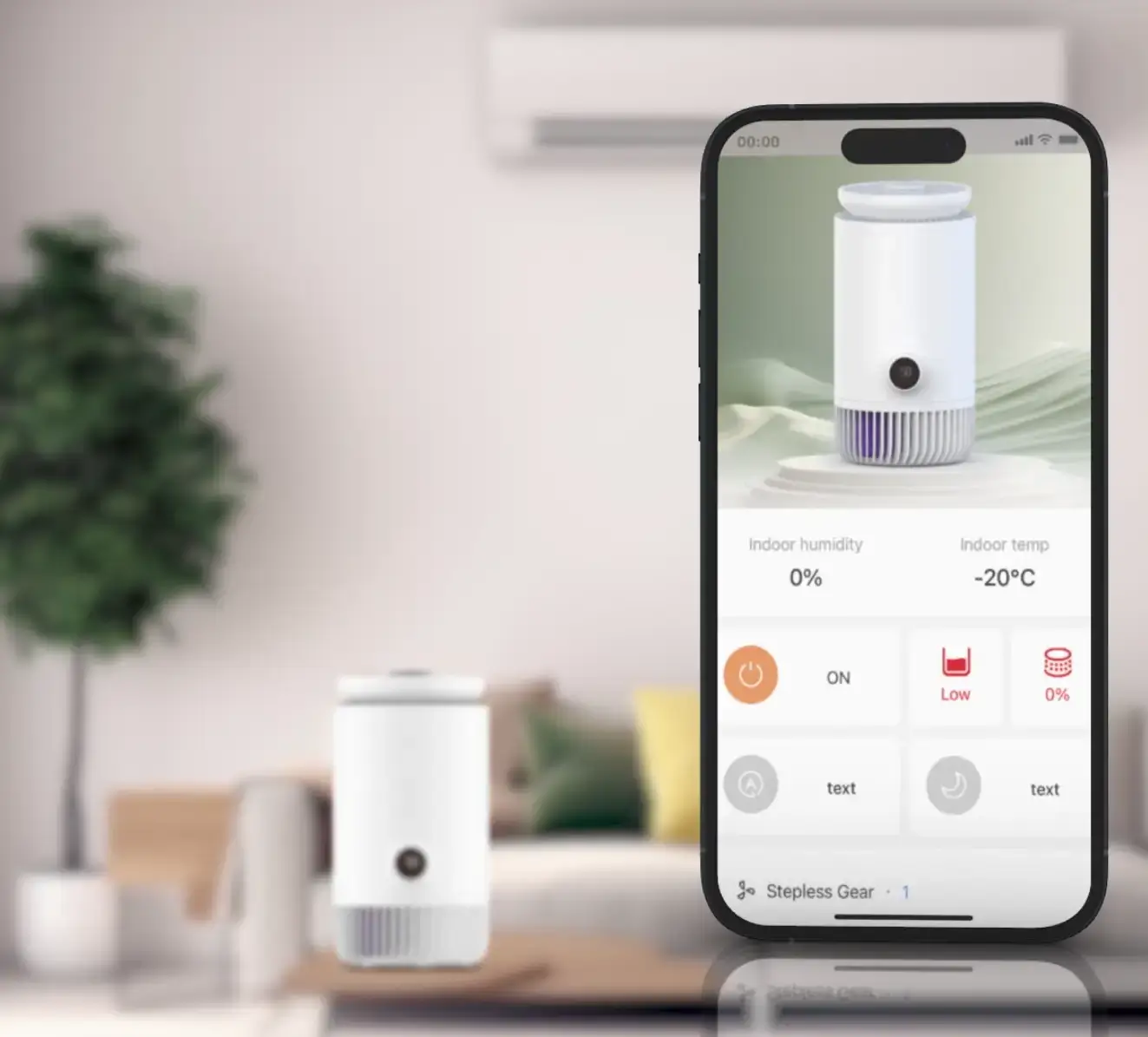
The foundation of this transformation lies in connectivity protocols, with Matter protocol5 emerging as a unifying standard that enables seamless integration across different smart home ecosystems. Matter-compatible humidifiers can communicate effortlessly with Google Home, Apple HomeKit, and Amazon Alexa, eliminating the fragmentation that previously limited smart device adoption. For B2B buyers, this interoperability means offering products that integrate smoothly into existing smart building infrastructures, regardless of the platforms already in use.
Beyond simple connectivity, AI algorithms are revolutionizing how humidifiers operate within commercial environments. Traditional humidifiers operate on fixed schedules or manual settings, often resulting in suboptimal humidity levels that fluctuate throughout the day. Smart humidifiers equipped with AI can analyze patterns in indoor air quality6, occupancy, outdoor weather conditions, and even building materials to automatically adjust humidity levels for optimal comfort and efficiency.
The practical applications of these technologies in commercial settings are compelling. Smart humidifier systems7 equipped with IoT-enabled capabilities report significant energy savings through more efficient operation. Rather than running continuously, these systems operate precisely when needed and at appropriate levels. Additionally, the ability to remotely monitor and manage multiple devices across different locations provides facility managers with unprecedented control and insight into indoor air quality management.
Data collection capabilities represent another transformative aspect of smart humidifiers. These devices can gather valuable information about indoor air quality, usage patterns, and performance metrics. For businesses, this data translates into actionable insights for improving energy efficiency, maintenance scheduling, and overall indoor environment quality. The ability to predict maintenance needs before failures occur reduces downtime and extends equipment lifespan, creating substantial cost savings in commercial applications.
For B2B buyers, understanding this technological shift is essential for making forward-looking purchasing decisions. The premium associated with IoT and AI-enabled humidifiers is increasingly justified by their enhanced functionality, efficiency benefits, and integration capabilities. As commercial buildings become smarter and more connected, standalone, non-communicating humidifiers risk becoming obsolete in premium market segments.
The future direction of this technology points toward even greater integration, with humidifiers becoming nodes in comprehensive indoor air quality management systems that coordinate with HVAC, air purification, and building management platforms. B2B buyers who recognize and embrace this trend will be well-positioned to offer solutions that meet the evolving expectations of commercial clients.
What Business Value Do Integrated 2-in-1 Devices Offer?
The emergence of integrated 2-in-1 devices that combine air purification and humidification functions represents one of the most significant innovations in the indoor air quality market. For B2B buyers, these multifunctional devices offer compelling advantages in terms of space efficiency, cost-effectiveness, and simplified management.
Traditional approaches to indoor air quality management typically involve deploying separate devices for different functions – air purifiers to remove particulates and contaminants, and humidifiers to maintain optimal moisture levels. This approach, while effective, creates several challenges in commercial environments: increased space requirements, multiple maintenance schedules, higher energy consumption, and potentially conflicting operations between devices. The classic example of this conflict occurs when ultrasonic humidifiers trigger air purifier sensors, creating a counterproductive cycle of operation.
Integrated air purifier humidifier8 devices solve these challenges through thoughtful engineering that ensures harmonious operation of both functions. By housing air purification and humidification capabilities within a single unit, these devices eliminate the potential conflicts that can occur between separate systems. For commercial spaces where aesthetic considerations and space efficiency are important, such as hotel rooms, medical offices, or retail environments, these integrated solutions offer significant advantages.
The cost benefits of integrated devices extend beyond the initial purchase price. Operational expenses are reduced through shared components, simplified maintenance procedures, and more efficient energy usage. A comprehensive cost analysis conducted across various commercial implementations revealed that 2-in-1 devices typically deliver 15-25% savings in total ownership costs compared to separate systems over a five-year period.
Case studies from real-world implementations highlight these benefits. A boutique hotel chain that deployed integrated air purifier-humidifiers in guest rooms reported improved guest satisfaction scores related to air quality and sleep comfort, while simultaneously reducing maintenance staff time by 30%. Similarly, a medical office complex noted improved indoor air quality measurements and reduced energy consumption after switching from separate systems to integrated devices.
The technical challenges of creating effective 2-in-1 devices are substantial, requiring sophisticated engineering to ensure that both functions operate optimally without compromise. Leading manufacturers like HisoAir have invested significantly in research and development to overcome these challenges, resulting in integrated solutions that perform as well as or better than standalone devices in each category.
For B2B buyers, the decision to adopt integrated devices should be guided by specific use case requirements. While not every application will benefit from 2-in-1 solutions, commercial environments where space is at a premium, aesthetic considerations are important, or management simplicity is valued will find compelling advantages in these integrated approaches. As the technology continues to mature, we can expect to see even greater functionality incorporated into unified indoor air quality management systems.

How Should Global Supply Chain Changes Influence Your Procurement Strategy?
The global manufacturing landscape for humidifiers and indoor air quality products is undergoing significant transformation, driven by geopolitical tensions, tariff changes, and evolving supply chain strategies. For B2B buyers, understanding these shifts is essential for developing resilient procurement approaches that balance cost, quality, and reliability.
Traditionally, China has dominated humidifier manufacturing, leveraging its robust supply chain, engineering expertise, and production efficiency. However, recent years have seen the emergence of a "supply chain diversification9" strategy among leading brands and manufacturers, diversifying production across multiple countries to mitigate risks and optimize costs. This approach doesn't abandon China's manufacturing advantages but complements them with additional production capabilities in countries like Vietnam, Thailand, and Mexico.
Vietnam has emerged as a particularly attractive alternative manufacturing location for humidifiers and air quality products. Its proximity to China facilitates supply chain integration, while its lower labor costs and favorable trade agreements with major markets offer cost advantages. However, B2B buyers should note that Vietnam's humidifier manufacturing sector still relies heavily on components imported from China, particularly specialized elements like meltblown materials and precision molds. This dependency typically results in production costs that remain 10-15% higher than equivalent Chinese manufacturing.
Thailand presents another viable option in the diversified manufacturing landscape. With established electronics manufacturing capabilities and improving infrastructure, Thailand has attracted significant investment from air quality product manufacturers. Companies like HisoAir have established production facilities in Thailand specifically targeting exports to the US market and major retailers like Walmart. Similar to Vietnam, Thailand's humidifier production currently carries a cost premium compared to China but offers strategic advantages for market access and risk mitigation.
For B2B buyers targeting the North American market, Mexico's growing manufacturing capabilities merit serious consideration. Its proximity to the US market translates to reduced shipping times and costs, while USMCA (formerly NAFTA) provisions offer favorable trade terms. However, Mexico's humidifier manufacturing sector is still developing, with production costs typically 15-20% higher than Chinese alternatives and continued reliance on imported components for specialized parts.
The impact of tariffs and trade policies on procurement decisions cannot be overstated. Recent and anticipated changes in US trade policy, particularly regarding imports from China, have accelerated the diversification of manufacturing locations. B2B buyers must carefully analyze the total landed cost of products, including tariffs, shipping, and compliance expenses, when evaluating sourcing options.
Despite these shifts, China remains indispensable for humidifier research, development, and engineering expertise. Even as production diversifies geographically, complex design work, prototype development, and technical problem-solving continue to leverage China's deep expertise in this sector. B2B buyers should consider hybrid approaches that utilize China's engineering strengths while diversifying production to optimize for market access and risk management.
HisoAir's multi-country manufacturing strategy exemplifies this balanced approach, maintaining core engineering and R&D capabilities in China while expanding production facilities in Vietnam and Thailand to serve different market needs. This strategy enables us to offer B2B buyers flexibility in sourcing options while maintaining consistent quality standards and technical innovation across all production locations.
How Can Seasonal Demand Patterns Inform Your Year-Round Procurement Planning?
Understanding the seasonal dynamics of humidifier demand is crucial for B2B buyers developing effective inventory management and procurement strategies. While consumer purchasing patterns show clear seasonality, commercial procurement requires a more nuanced, year-round approach to ensure consistent supply and optimal pricing.
Humidifier demand in consumer markets typically peaks during winter months when heating systems reduce indoor humidity levels, causing discomfort and health issues. This seasonal spike creates significant pressure on manufacturing capacity and logistics systems, often resulting in extended lead times and premium pricing for rush orders. For B2B buyers, relying exclusively on in-season procurement can lead to higher costs, limited product availability, and potential disruptions to your supply chain.
Market data reveals that humidifier sales in North America typically increase by 200-300% during October through February compared to summer months. This dramatic fluctuation presents both challenges and opportunities for strategic B2B procurement. By understanding these patterns, forward-thinking buyers can implement counter-cyclical purchasing strategies that leverage off-season capacity and pricing advantages.
Comprehensive analysis of global humidifier market size10 trends indicates that the market will grow from approximately $3.8 billion in 2025 to over $7 billion by 2035, representing a compound annual growth rate of around 6.4%. This sustained growth is driven by increasing health awareness, rising disposable incomes, and growing recognition of humidity's role in overall indoor air quality. For B2B buyers, this growth trajectory signals the importance of establishing strong supplier relationships and long-term procurement strategies rather than opportunistic purchasing.
The increasing health consciousness among consumers has particular implications for commercial procurement strategies. Research indicates that consumers are increasingly willing to pay premium prices for products that offer demonstrable health benefits, including advanced humidification technologies. This trend is especially pronounced in commercial settings like healthcare facilities, premium hospitality, and high-end office spaces, where indoor air quality is viewed as an essential component of occupant wellbeing rather than a discretionary amenity.
For B2B buyers, implementing a year-round procurement strategy offers several advantages: negotiating favorable pricing during off-peak production periods, securing priority manufacturing capacity during high-demand seasons, reducing inventory carrying costs through scheduled deliveries, and maintaining consistent product availability for customers. Leading manufacturers like HisoAir offer partnership programs specifically designed to support this approach, providing guaranteed capacity, preferential pricing, and flexible delivery schedules for B2B buyers who commit to year-round procurement plans.
Case studies from successful implementations demonstrate the effectiveness of this approach. A major hospitality supply company that shifted from seasonal to year-round procurement reported a 12% reduction in total acquisition costs and virtually eliminated stockouts during peak demand periods. Similarly, a healthcare equipment distributor leveraged off-season purchasing to secure preferential pricing and customization options that would have been unavailable during high-demand periods.
The optimal procurement strategy will vary based on specific business models and customer needs, but the trend clearly favors more sophisticated, year-round approaches rather than reactive, seasonal purchasing. By aligning procurement cycles with manufacturing capacity rather than end-user demand, B2B buyers can gain significant competitive advantages in cost, availability, and service levels.
What Commercial Value Does Next-Generation Humidifier Technology Deliver?
The evolution of humidifier technology represents more than just incremental product improvements—it offers transformative commercial value for businesses across multiple sectors. For B2B buyers, understanding this value proposition is essential for making strategic purchasing decisions that align with both current needs and future market directions.
At its core, next-generation humidifier technology delivers three primary forms of commercial value: health benefits that improve occupant wellbeing, operational efficiencies that reduce costs, and technological integration that enhances overall building management. Each of these value dimensions can be quantified and leveraged to justify investment in advanced humidification solutions.
The health benefits of optimal humidity levels in commercial environments are well-documented and increasingly recognized as business-critical. Research indicates that maintaining relative humidity between 40-60% can reduce the transmission of airborne viruses, alleviate respiratory symptoms, and improve cognitive performance. For businesses, these benefits translate directly to reduced absenteeism, improved productivity, and enhanced customer experiences. Healthcare facilities that implemented advanced humidification systems reported reduced infection rates and improved patient recovery times, while office environments noted decreased sick days and higher employee satisfaction scores.
Operational efficiencies derived from next-generation humidifiers create substantial cost savings over traditional systems. Smart humidifiers with precise humidity control typically use 20-30% less energy than conventional models, while their predictive maintenance capabilities reduce service costs and extend equipment lifespan. The integration of IoT functionality enables centralized management of multiple units, reducing the labor required for monitoring and adjustment. These efficiencies are particularly valuable in large commercial spaces like hotels, office buildings, and healthcare facilities where small percentage improvements in energy usage or maintenance costs can yield significant absolute savings.
The technological integration capabilities of advanced humidifiers create value through enhanced building management and improved occupant experiences. By connecting with building automation systems, HVAC controls, and other indoor air quality devices, smart humidifiers contribute to holistic environmental management that optimizes for comfort, energy efficiency, and air quality simultaneously. This integration capability is increasingly expected in premium commercial properties and represents a competitive advantage for businesses that implement it effectively.
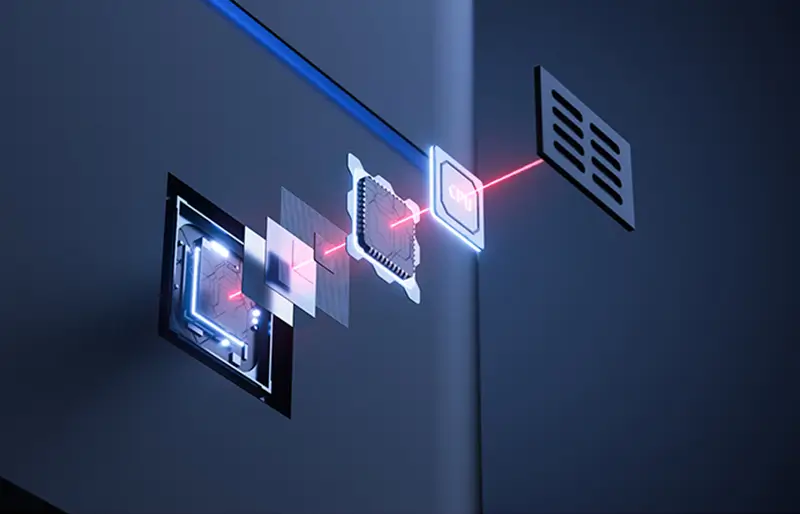
For B2B buyers evaluating humidifier options, a comprehensive decision framework should consider all three value dimensions rather than focusing exclusively on initial purchase price. This approach reveals that premium features like evaporative technology, stainless steel components, and smart connectivity often deliver superior return on investment despite higher upfront costs. The specific value calculation will vary by application, but the trend across commercial sectors clearly favors advanced solutions that deliver benefits beyond basic humidification.
As a manufacturer committed to innovation and quality, HisoAir continues to develop humidification solutions that maximize these value dimensions for our B2B partners. Our engineering team works closely with commercial clients to understand their specific requirements and develop customized solutions that deliver measurable value. Whether you're equipping healthcare facilities, hospitality properties, or commercial office spaces, our expertise can help you select and implement humidification technologies that align with your business objectives and customer expectations.
The future of commercial humidification lies in increasingly integrated, intelligent, and health-focused solutions. B2B buyers who recognize this direction and align their procurement strategies accordingly will be well-positioned to deliver superior environments for their customers while optimizing operational costs and maintenance requirements.
Conclusion: Making Strategic Decisions in the Evolving Humidifier Market
The humidifier market is undergoing a profound transformation driven by technological innovation, changing consumer preferences, and evolving global supply chains. For B2B buyers, navigating this changing landscape requires a strategic approach that balances immediate needs with long-term market trends.
The shift from ultrasonic to evaporative technology represents a fundamental change in how humidity is delivered in commercial environments. By eliminating the dispersal of minerals and potential contaminants, evaporative systems align with the growing emphasis on indoor air quality and occupant health. B2B buyers should consider this trend when making procurement decisions, particularly for applications where air quality is paramount.
Material innovations, particularly the adoption of stainless steel water tanks, address critical hygiene concerns in commercial humidification. While these premium materials increase initial costs, they deliver substantial benefits in maintenance requirements, operational lifespan, and user satisfaction. Forward-thinking B2B buyers are increasingly prioritizing these quality features over lowest-cost options, recognizing their superior long-term value.
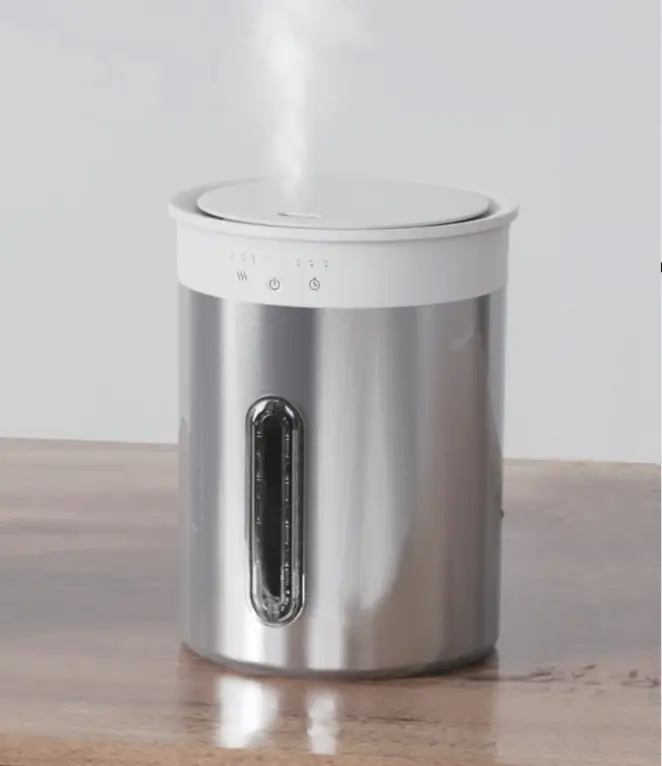
The integration of IoT and AI capabilities is transforming humidifiers from standalone appliances to intelligent nodes in comprehensive indoor air quality management systems. This connectivity enables unprecedented control, efficiency, and data-driven decision making. B2B buyers should evaluate not just current functionality but also future integration potential when selecting humidification solutions.
The trend toward integrated 2-in-1 devices that combine purification and humidification functions offers compelling advantages for commercial applications where space, aesthetics, and management simplicity are valued. These multifunctional solutions represent the future direction of indoor air quality management and merit serious consideration for appropriate use cases.
Global manufacturing diversification continues to reshape the supply landscape for humidifiers and related products. B2B buyers should develop flexible sourcing strategies that leverage the strengths of different production locations while mitigating risks associated with geopolitical tensions and trade policy changes. HisoAir's multi-country manufacturing approach exemplifies this balanced strategy, offering options that can be tailored to specific market needs.
Understanding seasonal demand patterns and implementing year-round procurement strategies can yield significant advantages in pricing, availability, and service levels. By aligning purchasing cycles with manufacturing capacity rather than end-user demand, B2B buyers can secure preferential terms and ensure consistent product availability.
As you navigate these complex considerations, HisoAir stands ready to partner with you in developing customized humidification solutions that meet your specific requirements. Our engineering expertise, manufacturing capabilities across multiple countries, and commitment to innovation make us an ideal partner for B2B buyers seeking high-quality, differentiated indoor air quality products.
The future of humidification technology is increasingly integrated, intelligent, and health-focused. By understanding these trends and aligning your procurement strategy accordingly, you can deliver superior value to your customers while optimizing your operational efficiency and competitive positioning in this growing market.
-
Effect of aerosol particles generated by ultrasonic humidifiers on the lung tissue of mice. Research shows ultrasonic humidifiers can generate aerosol particles that may affect air quality and potentially impact respiratory health when minerals and impurities are present in water. ↩
-
Evaporative Humidifier: Humidity Control Explained. Evaporative humidifiers help maintain comfortable humidity levels, improving skin hydration and alleviating dry eyes and throat while naturally filtering water to prevent mineral dispersion in the air. ↩
-
4 Ways a Humidifier Can Improve Your Health. Proper humidification improves congestion and cough by keeping the upper respiratory tract properly moisturized, helping it function more smoothly and providing relief from respiratory symptoms. ↩
-
The Hidden Dangers of Humidifiers. Stainless steel water tanks are non-toxic, do not leach harmful chemicals, and resist bacterial growth, making them a superior choice for humidifier construction compared to plastic alternatives. ↩
-
Matter is a unifying, IP-based connectivity protocol built on proven technologies, helping connect and build reliable, secure IoT ecosystems across different smart home platforms regardless of manufacturer. ↩
-
Indoor Air Quality and Health. Indoor air quality has a significant impact on health and quality of life, with research showing exposure to indoor air pollution may pose greater health risks than outdoor pollution for many people. ↩
-
Smart, Cloud-Connected Humidifier. Case studies demonstrate how IoT infrastructure enables smart humidifiers to connect with cloud platforms, allowing for remote monitoring, automated control, and data-driven operation that significantly improves efficiency and user experience. ↩
-
2-in-1 Purify+Humidify technology combines air purification and humidification in a single device, using dual action technology to rapidly clean air while maintaining optimal humidity levels, eliminating the need for separate devices. ↩
-
China Plus One Strategy for Global Supply Chain Diversification. The "China Plus One" approach has emerged as a key solution for companies to diversify their manufacturing and sourcing beyond China, reducing risks while maintaining access to China's manufacturing expertise. ↩
-
Air Humidifier Market Size & Share Analysis. The global humidifier market is expected to register a CAGR of greater than 6% during the forecast period, driven by increasing health awareness and growing recognition of humidity's role in overall indoor air quality. ↩


